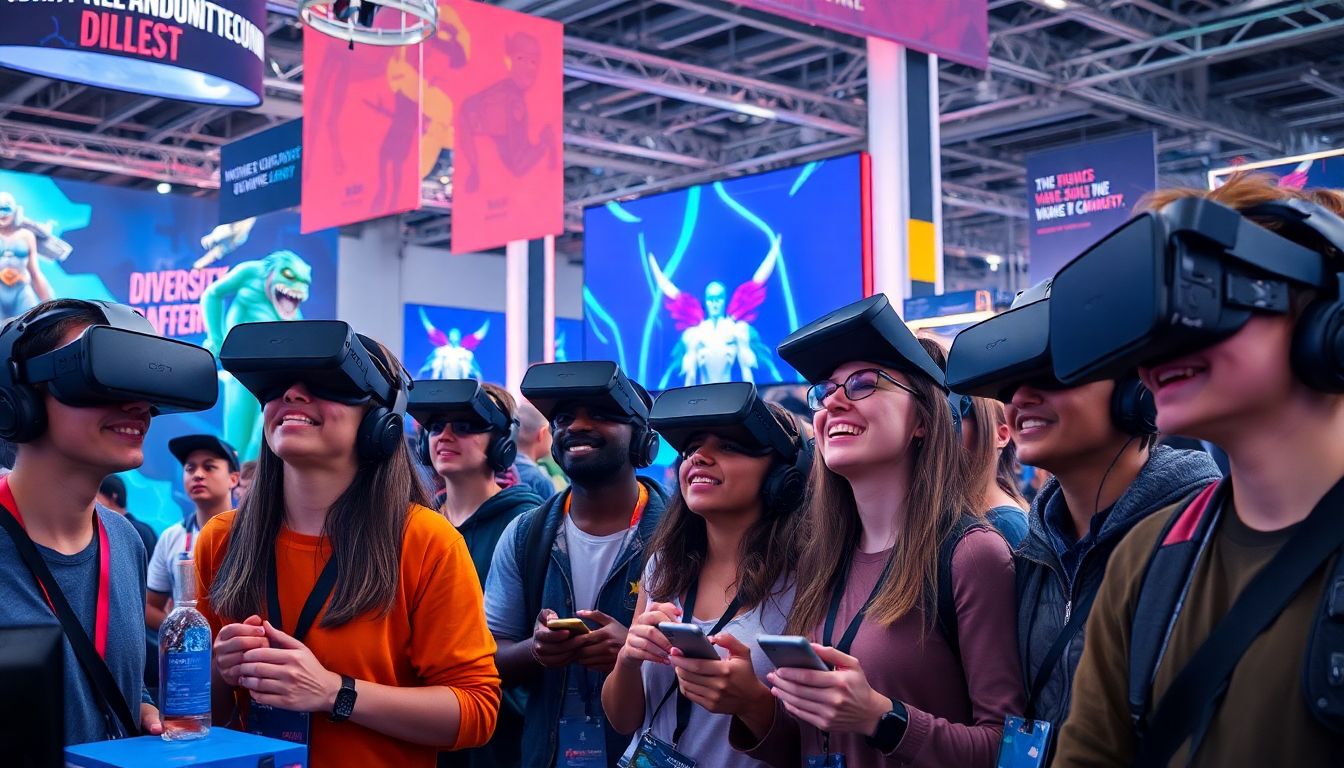Diversity Safety: Gaming’s Cultural Turning Point

Diversity & Safety: Gaming’s Cultural Turning Point
Introduction
Gaming is changing. It’s no longer just about pixels and scores. Today, it reflects what society cares about—diversity and inclusion. More players now want games that show different cultures, backgrounds, and stories. At the same time, safety is becoming a top priority. We all want a gaming space that’s welcoming, respectful, and free from harm. This shift isn’t accidental. Recent social movements and industry watchdogs have pushed gaming into a new era. It’s a turning point that could shape gaming for years to come.
The Rise of Diversity in Gaming: A Cultural and Industry Overview
Recognizing the Shift Towards Inclusivity
Games now feature characters from many backgrounds. Players see heroes that look like them or represent their culture. This makes gaming more relatable and real. It’s also about the stories being told. Developers are choosing to highlight diverse voices, which was rare before. Social movements such as Black Lives Matter and LGBTQ+ rights have fueled this change. Their messages have inspired game makers to include more authentic, inclusive content.
Industry Data and Trends
Recent stats show that games with diverse characters are popular. For example, sales of games with LGBTQ+ themes have grown by over 40%. Women now make up nearly 50% of the gaming audience. More diverse creators are also entering the industry, with programs designed to boost underrepresented voices. This mix of talent and content is changing the overall market, making it richer and more lively.
Notable Examples and Case Studies
Some games stand out for their inclusive stories. "The Last of Us Part II" features strong LGBTQ+ characters headlining the story. "Tell Me Why" centers on a transgender protagonist. Major companies like Xbox are actively promoting diversity through initiatives such as “Inclusive Storytelling,” aiming to bring more representation into mainstream titles. These examples show how gaming is becoming more reflective of the world we live in.
Safety Challenges in a Diversifying Gaming Community
Identifying Common Safety Concerns
As gaming becomes more diverse, so do the risks. Toxic players who bully, harass, or hate on marginalized gamers are a huge concern. Hate speech, doxxing, and threats are sadly common online. For people from minority backgrounds, the game world can sometimes feel unsafe. This leads to many players avoiding certain communities or hiding their identities.
Impact on Players and Industry
When players face harassment, it hits them hard. They might feel anxious, upset, or even quit playing altogether. For the industry, toxic environments lead to fewer diverse talent and less innovation. A community that doesn’t feel safe discourages new players or creators from joining. That hampers growth and limits the potential of gaming as a reflection of society.
Expert Insights
Cybersecurity experts warn that without proper safety measures, harassment will only increase. Psychologists point out that repeated online abuse can cause long-term emotional harm. Industry leaders argue that creating safe spaces is not optional but essential for future success. Active moderation, reporting tools, and community guidelines are steps in the right direction.
Industry Responses and Initiatives for Promoting Safety
Technological Measures
Platforms are now using tech to fight toxicity. Reporting features let players flag abuse easily. AI tools scan chats for hate speech and remove harmful comments. Twitch and Discord have added moderation bots that keep conversations friendly. These tools help maintain a healthier gaming environment.
Policy and Community Guidelines
Clear rules matter. Major companies are enforcing anti-harassment policies across their platforms. They promote respectful language and zero tolerance for hate. Also, many now offer cultural sensitivity training for staff and moderators. These steps build a community built on respect and understanding.
Industry Partnerships and Advocacy
Collaborations with groups like the LGBTQ+ gaming alliance and anti-hate organizations are growing. Campaigns like Xbox’s “Level Up and Speak UP” encourage gamers to promote kindness. Such efforts show that the industry recognizes its role in shaping a safer gaming culture.
Best Practices for Developing Inclusive and Safe Gaming Environments
For Developers and Publishers
Include diverse characters in your stories. Make sure they feel real and authentic. Build safety features into your game from the start, like chat filters and moderation tools. Listen to feedback from marginalized players—they often have the best insights.
For Players and Community Managers
Be a positive voice in gaming spaces. Encourage friendly chat and report harmful behavior. Moderators should step in when needed. Educate community members about cultural differences and respect. These actions help create a welcoming environment.
Actionable Tips
Keep safety protocols current. Regularly update your community standards based on feedback. Create stories and characters that mirror the diversity of the real world. Promoting inclusivity isn’t just good PR; it’s good for everyone.
The Future of Gaming: A Cultural and Safer Digital Space
Looking ahead, expect to see more innovations in safety and diversity. Virtual reality and AI could make gaming spaces more personal and safer than ever. As technology advances, so will our ability to build truly inclusive communities. The industry must stay accountable, listen to players, and partner with advocacy groups. Continued efforts will ensure gaming remains a space where all players can enjoy and grow.
Conclusion
Diversity and safety mark a new chapter in gaming culture. This isn’t just about better stories or cooler characters; it’s about building communities where everyone belongs. When we promote inclusion and protect players, the industry grows stronger. This journey takes effort from developers, players, and companies alike. The future is bright for gaming—more welcoming, more vibrant, and safer than ever before. Let’s keep pushing to make this turning point a lasting change.
